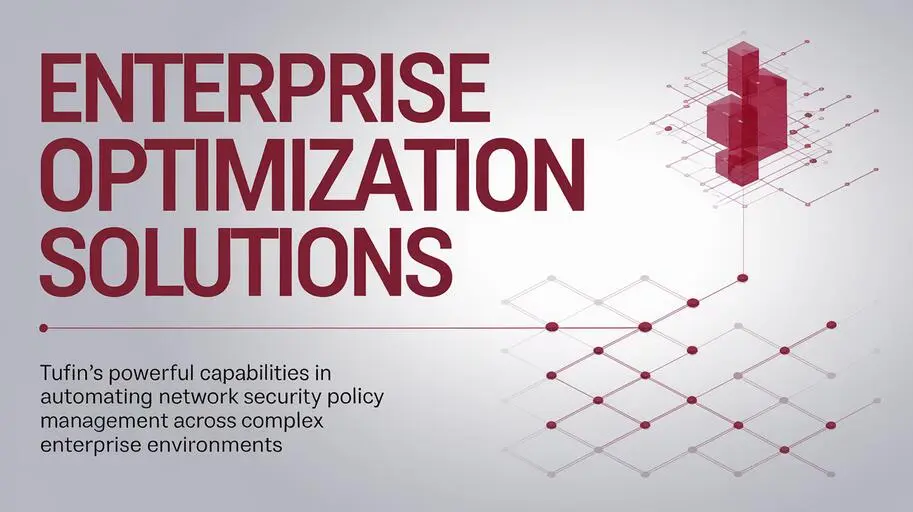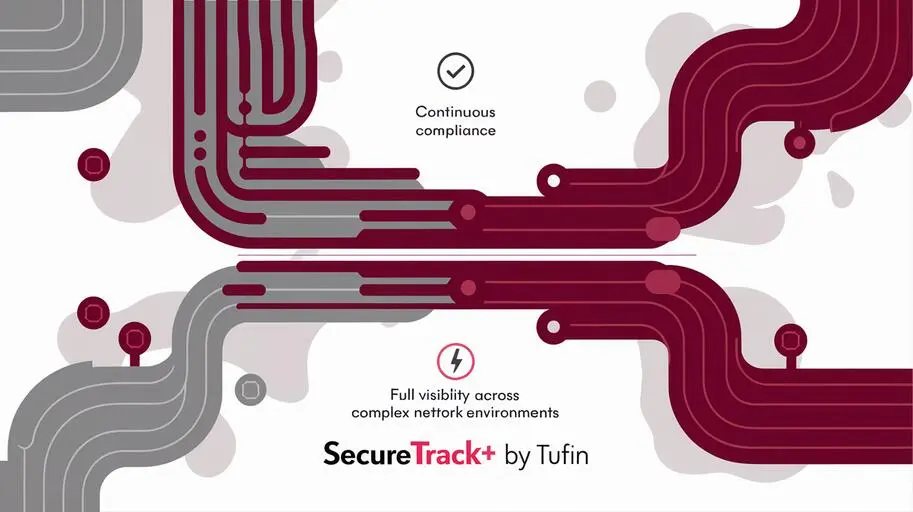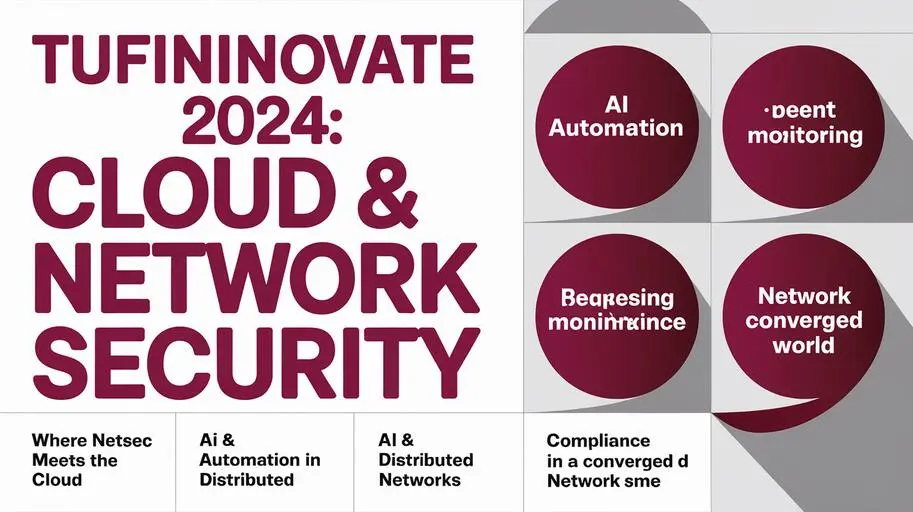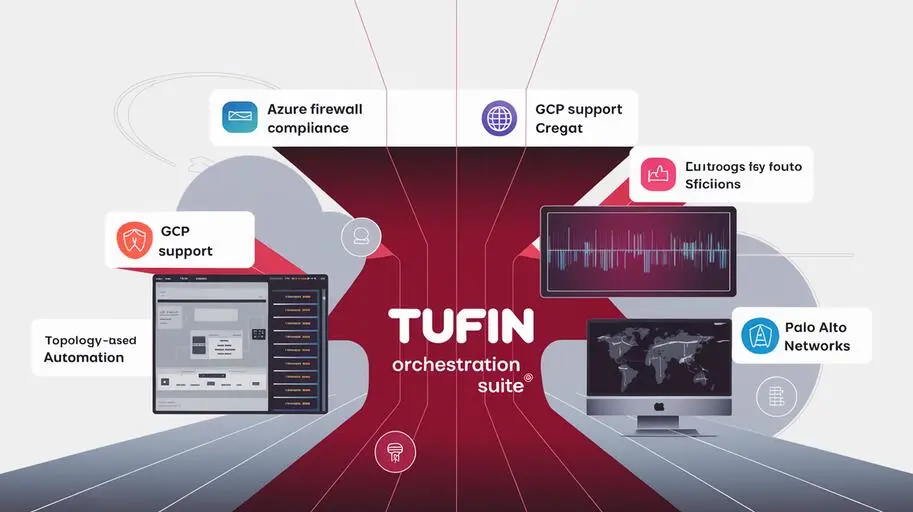
Modern organizations face increasing complexity in managing application security. Threats are becoming more sophisticated, and infrastructure is becoming more distributed, encompassing cloud and hybrid environments. Ensuring secure access to applications and effectively managing their interconnections is becoming a critical task. Tufin Orchestration Suite is a key solution for centralized security policy management, security automation, and network segmentation.
Why is secure application access so important?
In the digital age, applications are the backbone of business. They enable customer interaction, support internal processes, and store critical data. Inadequate application security can lead to serious consequences, including data breaches, financial losses, and reputational damage. Web applications are particularly vulnerable to various attacks, including DDoS, XSS, CSRF, and API attacks.
Application Security Threats:
- Vulnerabilities in code: Errors in software code can be exploited by attackers to gain unauthorized access.
- Misconfiguration: Incorrect security settings can open doors for attacks.
- Weak passwords and accounts: Compromised accounts allow attackers to impersonate legitimate users.
- Code injection: SQL injection and other types of attacks allow attackers to inject malicious code into applications.
- DDoS attacks: Overloading applications with traffic can lead to their unavailability.
Risks of Not Having Adequate Protection:
- Confidential data breach: Disclosure of customer personal data, financial information, or trade secrets.
- Business downtime: Unavailability of critical applications can lead to the interruption of business processes.
- Financial losses: Fines for non-compliance with regulatory requirements, costs of recovery after a breach.
- Reputational damage: Loss of trust from customers and partners.
- Compromise of intellectual property: Leakage of source code, algorithms, or other valuable developments.
- Legal liability: In addition to fines, liability to customers and partners may arise.
Tufin Orchestration Suite Solution for Secure Application Access
Tufin Orchestration Suite provides a comprehensive solution in which SecureTrack provides monitoring and visualization, SecureChange automates changes, and SecureApp manages application connectivity and microsegmentation.
Tufin SecureTrack: Network Security Monitoring and Visualization
Tufin SecureTrack provides traffic flow discovery, network visualization, and continuous security auditing. It allows real-time monitoring of changes in security policies, identifying configuration vulnerabilities, and ensuring compliance. SecureTrack allows you to customize network display, configure traffic anomaly detection rules, and create custom compliance reports.
Key Features of SecureTrack:
- Network visualization: graphical representation of network topology and security policies.
- Traffic flow discovery: Automatic identification of network connections and relationships between applications.
- Security audit: Continuous monitoring of changes in security policies and identification of violations.
- Security risk analysis: Identification of configuration vulnerabilities (e.g., redundant firewall rules) and assessment of potential damage.
- Reporting in Tufin: Creation of reports on security policies and their compliance with regulatory requirements.
Tufin SecureChange: Security Policy Change Automation
Tufin SecureChange provides security policy change management, security automation, and compliance. It automates the process of making changes to security policies, from change request to implementation and verification. Managing security policy changes with Tufin becomes more efficient and secure.
Key Features of SecureChange:
- Automated change process: from request to implementation and verification.
- Security risk analysis: Assessment of the impact of changes on network security.
- Automatic compliance verification: Ensuring compliance with regulatory requirements such as PCI DSS, HIPAA, and SOX ensures that security policies meet the necessary standards.
- Integration with identity and access management systems: SecureChange uses AD/LDAP more for user authentication than for application access control. It can use AD/LDAP groups when defining access policies in SecureApp, but this is not the primary function of the integration.
- Full audit log: Tracking of all changes made to security policies.
Tufin SecureApp: Application Connectivity Management and Microsegmentation
Tufin SecureApp provides application connectivity management, microsegmentation, and access control. It allows you to define and enforce security policies at the application level, providing granular control over access to applications and data. SecureApp does not create physical network segments; it manages existing segments and allows you to apply policies at the application level. Automated network segmentation using Tufin significantly improves security.
Key Features of SecureApp:
- Application connectivity management: Definition and control of network connections between applications.
- Microsegmentation: Creation of isolated network segments to protect critical applications.
- Access control: Definition of access policies based on roles and attributes (RBAC).
- Automatic discovery and mapping of applications: Simplifying the application connectivity management process.
- Support for hybrid environments: Protecting applications deployed in both traditional data centers and in the cloud. It is important to note that SecureApp supports working with cloud platforms such as AWS, Azure, and GCP, but it does not manage native cloud security tools. It orchestrates security policies on firewalls that protect cloud applications.

Technical Details and Architecture of the Tufin Solution
The architecture of Tufin’s secure application access solution is based on a centralized management platform that interacts with various network devices and security systems. It supports a wide range of vendors, including Cisco, Juniper, Palo Alto Networks, Check Point, and others.
Key Architecture Components:
- Centralized management platform: Provides a single point of control for security policies and changes.
- Agents: Agents (Collectors) are only required for some types of devices or for collecting NetFlow/sFlow data. Most devices use the API.
- API: Tufin’s API is used not only for integration with SIEM, but also for orchestration of changes across different Security tools.
- Database: Stores information about network configuration, security policies, and security events.
Integration with other systems:
- SIEM: Integration with SIEM allows you to transmit information about security events to SIEM systems for further analysis and response.
- Identity and access management systems: Integration with Active Directory and LDAP allows you to use existing user accounts and groups to control access to applications.
- Vulnerability management systems: Vulnerability management allows you to receive information about vulnerabilities in applications and network devices and take measures to eliminate them. Tufin receives information about vulnerabilities but does not take steps to eliminate them directly. It can use this information to change security policies to mitigate risks associated with these vulnerabilities.
Practical Aspects of Implementing Tufin for Secure Application Access
Implementing the Tufin solution for secure application access requires careful planning and preparation. It is necessary to define the goals and objectives of the implementation, analyze the existing infrastructure and security policies, and develop an implementation plan.
Recommendations for planning and implementation:
- Define the goals and objectives of the implementation: What do you want to achieve with Tufin?
- Analyze the existing infrastructure and security policies: What network devices and security systems do you have and what security policies are in place?
- Develop an implementation plan: Define implementation stages, deadlines, and required resources.
- Conduct a pilot project: Test Tufin in a small part of the network before deploying it across the entire infrastructure.
- Train personnel: make sure your personnel are trained to use Tufin. Training should be both technical (system administration) and operational (using it to manage policies).
Examples of SecureApp Usage:
- Microsegmentation of critical applications: Creation of isolated network segments to protect confidential information by defining rules that allow traffic only between authorized application components and block all other connections.
- Access control to web applications: Restricting access to web applications based on user roles imported from Active Directory and applying policies that allow access only to certain URLs or application functions.
- Protection against internal threats: Preventing unauthorized access to applications by employees by creating policies that block access to sensitive resources for users who do not have the appropriate permissions, even if they are inside the network.
Conclusion: Ensure Application Security with Tufin
Tufin offers a comprehensive and automated solution for secure application access, application connectivity management, and network segmentation. Tufin Orchestration Suite components: SecureTrack, SecureChange, and SecureApp provide security automation, security auditing, and compliance, helping organizations reduce security risks and improve network management efficiency. By using Tufin, you can be confident in the Tufin solution for managing application security risks and protecting your mission-critical applications and data.
For more information on how Tufin can help your organization ensure secure application access, contact us for a personalized consultation, request a demo, or review case studies.
FAQs on the topic: Secure Application Access with Tufin
-
Why is secure application access important?
Secure application access is critical because applications are the backbone of modern business processes. They facilitate customer interaction, support internal operations, and store sensitive data. Inadequate protection can lead to data breaches, financial losses, and reputational damage.
-
What are the main application security threats?
The main threats include code vulnerabilities, misconfigurations, weak passwords, code injections (e.g., SQL injections), and DDoS attacks.
-
What is Tufin Orchestration Suite and what does it consist of?
Tufin Orchestration Suite is a comprehensive solution for application connectivity management, network segmentation, and security automation. It consists of three main components: SecureTrack, SecureChange, and SecureApp.
-
What is Tufin SecureTrack and what functions does it perform?
Tufin SecureTrack provides network security monitoring and visualization. It allows you to monitor traffic flows, visualize network topology, conduct security audits, analyze risks, and generate reports on the security status of the network.
-
What is Tufin SecureChange designed for?
Tufin SecureChange automates the process of making changes to security policies, from change request to implementation and verification. It provides change management, security automation, and compliance.
-
What does Tufin SecureApp do?
Tufin SecureApp provides application connectivity management, microsegmentation, and access control. It allows you to define and enforce security policies at the application level, providing granular control over access to applications and data.
-
How does Tufin integrate with other security systems?
Tufin integrates with SIEM systems to transmit information about security events, with identity and access management systems (Active Directory, LDAP) to control access to applications, and with vulnerability management systems to identify and eliminate vulnerabilities.
-
What are the recommendations for implementing Tufin for secure application access?
It is recommended to define implementation goals, analyze the existing infrastructure and security policies, develop an implementation plan, conduct a pilot project, and train personnel.
-
What is microsegmentation and how does SecureApp help implement it?
Microsegmentation is the creation of isolated network segments to protect critical applications. SecureApp allows you to define and enforce security policies at the application level, providing granular access control and simplifying the creation of microsegments.
-
What are the main benefits of using Tufin to ensure secure application access?
The main benefits include a comprehensive and automated solution for secure access, application connectivity management, network segmentation, security automation, security audit and compliance, which helps organizations reduce security risks and improve network management efficiency.




